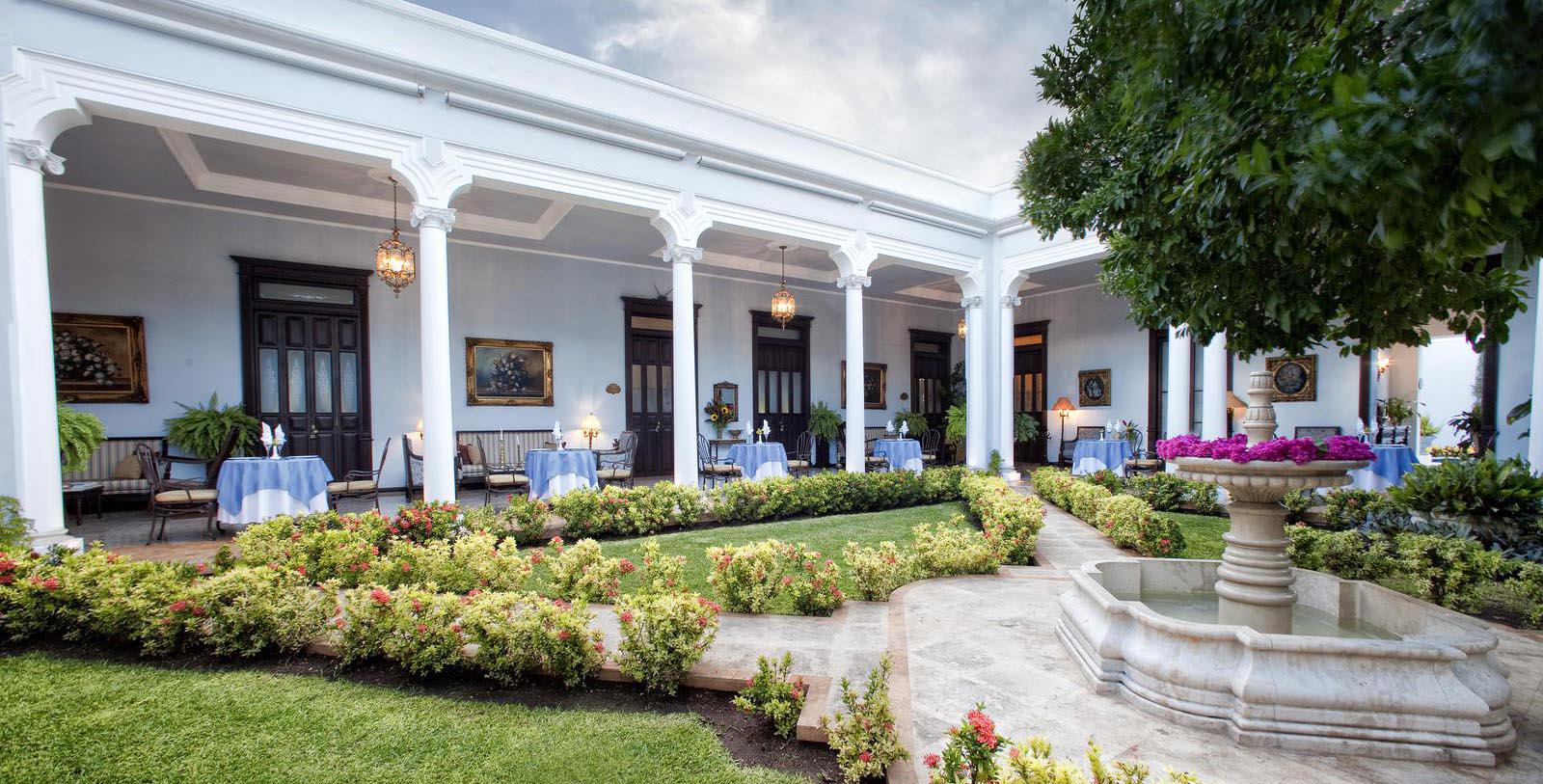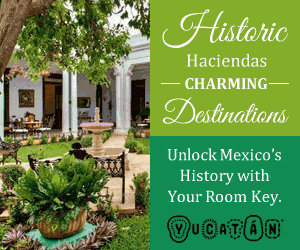Receive for Free - Discover & Explore eNewsletter monthly with advance notice of special offers, packages, and insider savings from 10% - 30% off Best Available Rates at selected hotels.
local attractions
Jaguar Golf Course
To play in this masterpiece designed by Jack Nicklau is a unique experience, with its ancient archaeological vestiges and mysterious cenotes, sacred to the Mayan culture. This professional golf course offers 18 holes, with a par of 72, and a playing distance of 7282 yards, wide fairways, and greens distributed around 11 lakes.
Cenotes
One of the distinguishing attractions of the state of Yucatan are the cenotes, whose term comes from Mayan “dzonot,” meaning “cavity with water”. The cenotes are unique formations. Besides being the fundamental resource of fresh water, cenotes were sacred places for the Mayans, representing the entrance to the spiritual underworld. Because the ground is limestone and very porous, the Yucatan Peninsula lacks aboveground water rivers, instead rainwater filters directly through the cracks forming underground caves and rivers, many of them, connected to each other. Frequently that limestone ground sinks into the water beneath, causing the deposits to open and creating a spectacle of green, yellow, and turquoise lights projected in the rocks, forming true works of art. The stalactite and stalagmite system is worthy of admiration. By tradition, the cenotes are a distinctive mark of the Yucatecan landscape. The sunlight penetrating the cracks between rocks and projected on the water offers a visual banquet of color.
Convents Route
Acanceh - The main attraction is the Plaza de las Tres Culturas (Three Cultures Square), where traits of pre-hispanic, colonial, and present times are found. The temple dedicated to Nuestra Señora de la Natividad (Our Lady of Nativity) stands out, as well as the chapel of the Virgin of Guadalupe. It is located 26 km southeast of Merida.
Tecoh - Visit the church and convent dedicated to the Virgin of the Asunción. Built over the base of a Mayan pyramid, the church has large quantities of carved stone, an impressive altar, and many paintings. Located 34 km southeast of Merida.
Mayapán - Also known as Bandera de los Mayas (flag of the Mayas), the walled city of Mayapán is considered to be the last great Mayan capital, and even though it doesn’t have big buildings, over four thousand archaeological structures have been discovered in this area. Located at km. 45 in the Merida-Acanceh road.
Tekit - A prosperous town of the Parish of San Antonio de Padua, Tekit is special for its images of saints in unexpected places. Located 64 km southeast of Merida.
Mama - Its temple and former Franciscan convent feature a beautiful bell tower and an atrium. Located 71 km southeast of Merida.
Teabo - Known for two sacred constructions: the Parish and Ex-convent of San Pedro y San Pablo, Teabo was built during the 17th century. Inside, an altarpiece with two caryatid columns stands out, and the Capilla de Indios dating from 1617. Located 84 km away from Merida.
Chumayel - In this town is the Templo de la Purísima Concepción (Church of the Purest Conception), built in the 16th century. It’s a clear example of religious architecture of the medieval crenelated style, taken to Yucatan by the first Spanish to arrive. Inside the temple, a black wooden Christ is featured. Located 80 km away from Merida.
Mani - Religious site of great importance, Mani still conserves impressive examples of its enigmatic past, such as the Templo del Convento de San Miguel Arcángel (Church of the Convent of Saint Michael Archangel), founded in 1549. Also of note, the open chapel first built in Yucatan.
Oxcutzcab - Place of the Ramón, tobacco, and honey, Oxcutzcab was founded by the Mayan group Xiú, after they abandoned the city of Maní. Its temple of San Francisco de Asís was founded in 1581 and completed in 1699, according to the inscription in its front. Inside is the main altarpiece of Salomonic columns and the niche with its sculpture. On the side there is the cloister. Located 109 km away from Merida.
Ticul - Known as the Pearl of the South, located 100 km away from Merida, Ticul is an architectural mix ranging from the Cathedral, the colonial buildings, and Mayan houses.
Muna - Meaning "New Water", Muna is a town that houses the Temple and ex-convent of the Asunción, built in the 17th century. Its side belfries are architecturally interesting, with three bodies each and a front gable end as well. There is a craft center in the main square. Located 64 km away from Merida.
Umán - Visit the magnificent Parish of San Francisco, a former Spanish convent of the 16th century. Of imposing proportions, its front is made of quarry stone with three attractive Gothic arches and its pairs of pilasters; the front is unfinished. Located 18 km southwest of Merida.
Emerald Coast
Celestún - A port where visitors can find the most exotic species of Yucatan, such as the pink flamingos.
El Palmar - A protected area where migratory aquatic birds live, such as the Canadian duck, who winter and reproduce here. It is considered to be one of the most important natural reserves because of its plentiful flora and diverse fauna, ideal for eco-tourism enthusiasts. Located 80 km away from Merida.
Progreso - The heart of the Emerald Coast, Progreso is a peaceful summer vacation port with warm weather all year. It offers all the services of a big city and has an expansive coast to enjoy water sports.
Uaymitún - Only 15 minutes away from Progreso, Uaymitun is a coastal town with white sand and emerald sea. Perfect for water sports and relaxation. It’s at the perfect spot between the commercial zone of Progreso and the peace of Telchac Puerto.
Xcambó - A splendid natural showcase combining peaceful beaches and an archaeological zone. Located in Telchac port (20 minutes away from Uaymitún).
Dzilam de Bravo - A picturesque fishermen town good for relaxation, and water sports. The main attractions are the marsh and mangrove swamps, ideal for small boats and casual fishing.
Archaeological Excursitions
Chichen Itza -The legendary Mayan city of Chichen Itza, Patrimony of Humanity declared by UNESCO in 1988 and Wonder of the World from 2007, is located to the East of Yucatan, on the highway to Cancún, 120 kilometers from Merida.The imposing legacy of the Itzaés goes beyond the Main Esplanade, the Observatory, the Sacred Cenote, the Ball Game and the Temple of the Thousand Columns.This archaeological zone possesses the most imposing building work of all: the Pyramid of Kukulkán, where twice per year, during the spring and autumn equinoxes, the 21 of March and the 22 of September respectively, a magical game of light and shade creates the appearance of a serpent that gradually descends by one of the stairs of the pyramid until it completes the emblematic feathered serpent. The inverse takes place at dusk on the days from 20 to 22 of December.
Dzibilchatun - Considered to be one of the oldest Mayan cities, its name means “the place where there is writing in flat stones”. Dzibilchaltún has its own charms, since it has a Franciscan chapel of the XVI century in the middle of the Mayan city. The Museum of the Mayan Town is home to several Spanish and Mayan devices, from ceramic objects to Spanish paintings, armors and arms, several Mayan wakes, stones, and carved lintels in excellent conditions. Another characteristic of Dzibilchaltún is its cenote.
Uxmal - To the south of Yucatan raises spectacularly the archaeological zone of Uxmal, declared a World Heritage Site by UNESCO. Known as “the three times built”, it is one of the Mayan culture archaeological zones of most impressive architecture in Yucatan. It has a tourist center offering all necessary services: an auditorium, crafts, infirmary, information bar, and the site museum in which beautiful and interesting carved stone and ceramic pieces are exhibited.


























